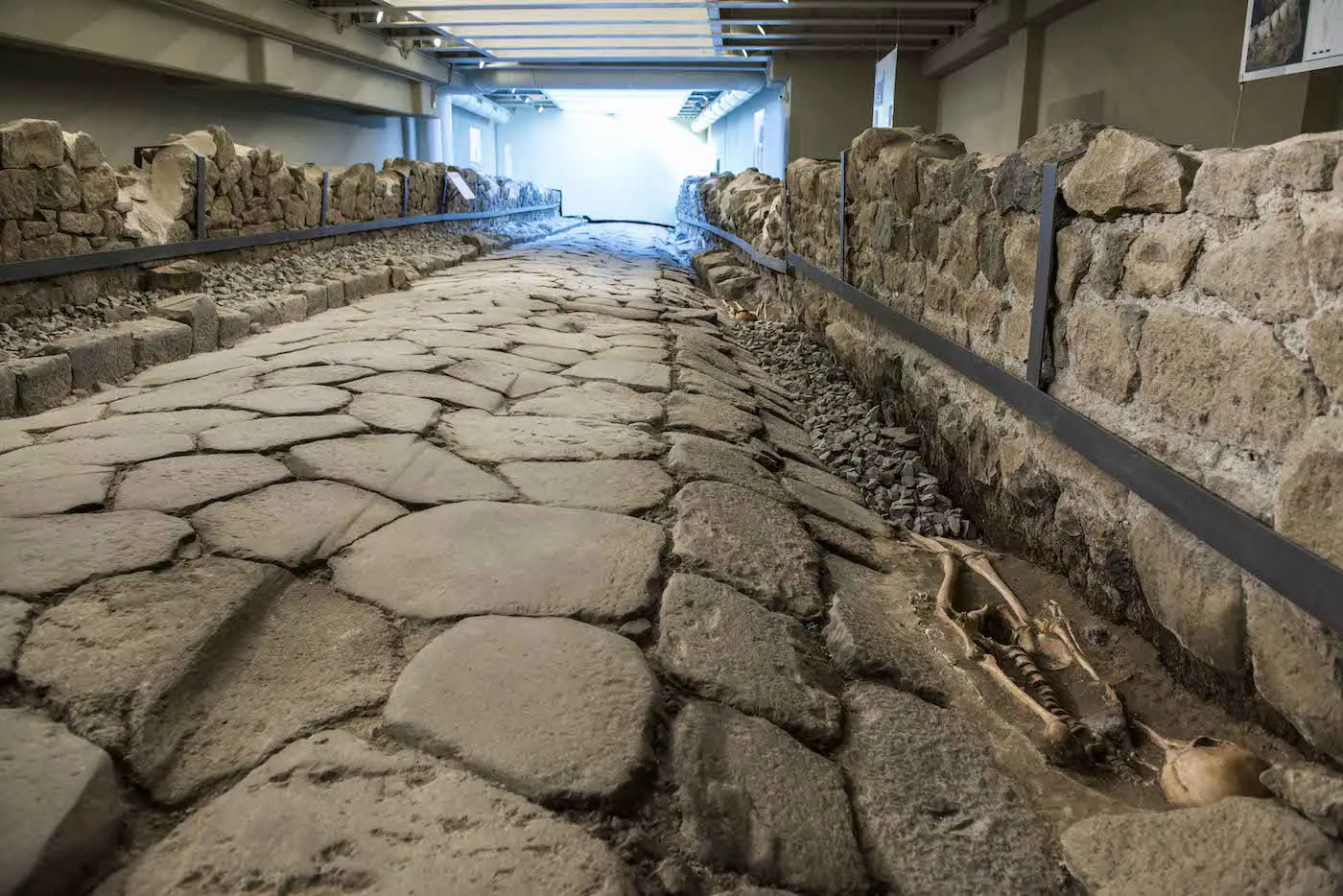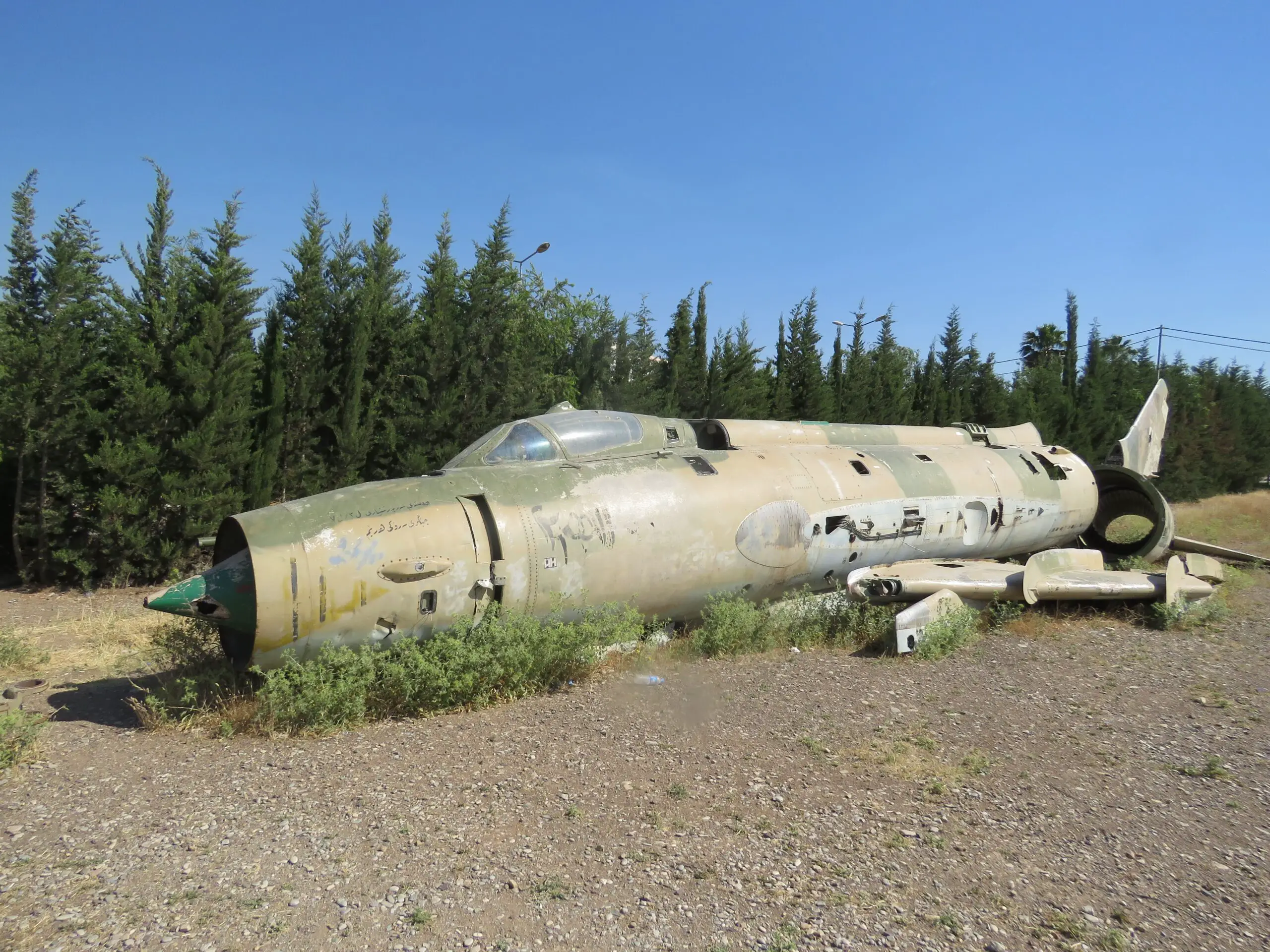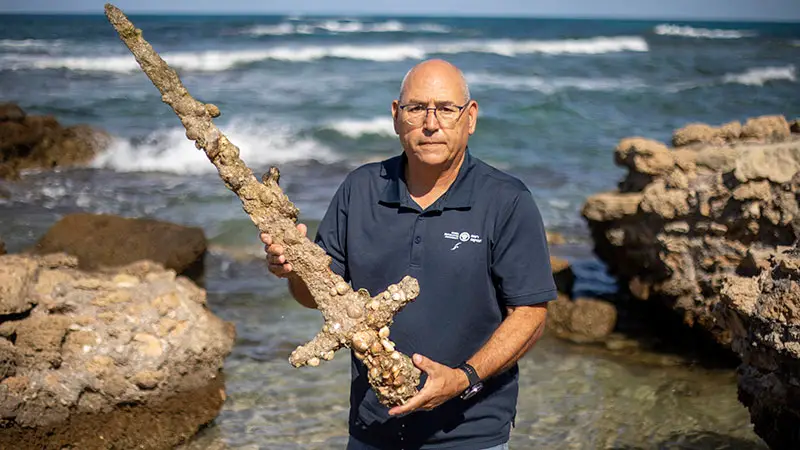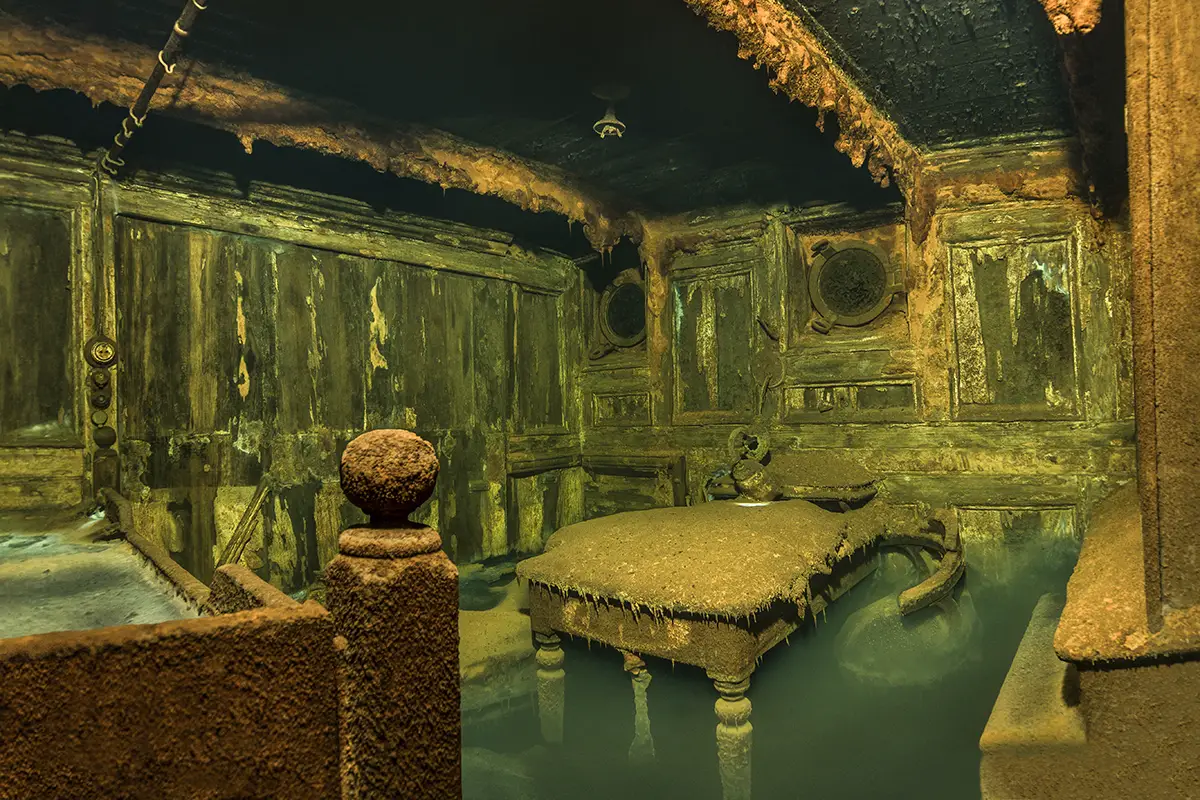When one thinks of the 1986 Chernobyl nuclear power plant accident in Ukraine the first thing that comes to mind is radiation.
Radiation affecting and contaminating the ground, the people, animals and many environments across Europe. What many people don’t think of is vehicles and equipment.
Content
According to world-nuclear.org, the power plant belched out radioactive substances for ten days before the Soviets got the situation under control. For far to many days the Soviets denied to the world that anything had happened.

Evacuated
Two radionuclides, iodine-131 which dissolves quickly and the long-lived caesium-137 which can stay on the ground for about thirty years, were very concerning as they quickly dispersed to areas of human habitation.
People were evacuated as far as eighteen miles away in all directions from the plant. In all, about one hundred radioactive elements were shot into the air during the explosion according to iaea.org.
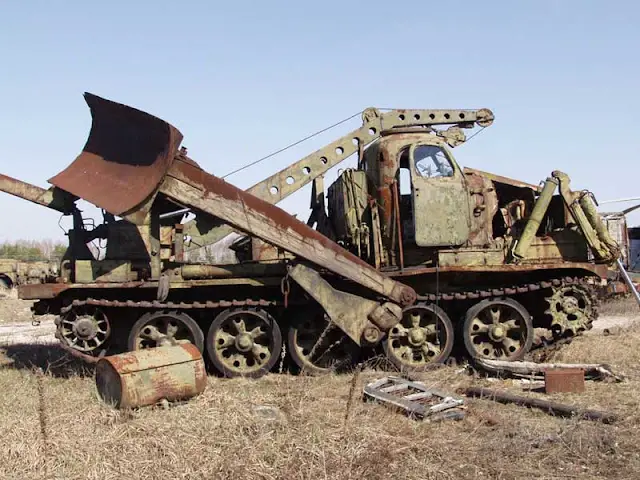
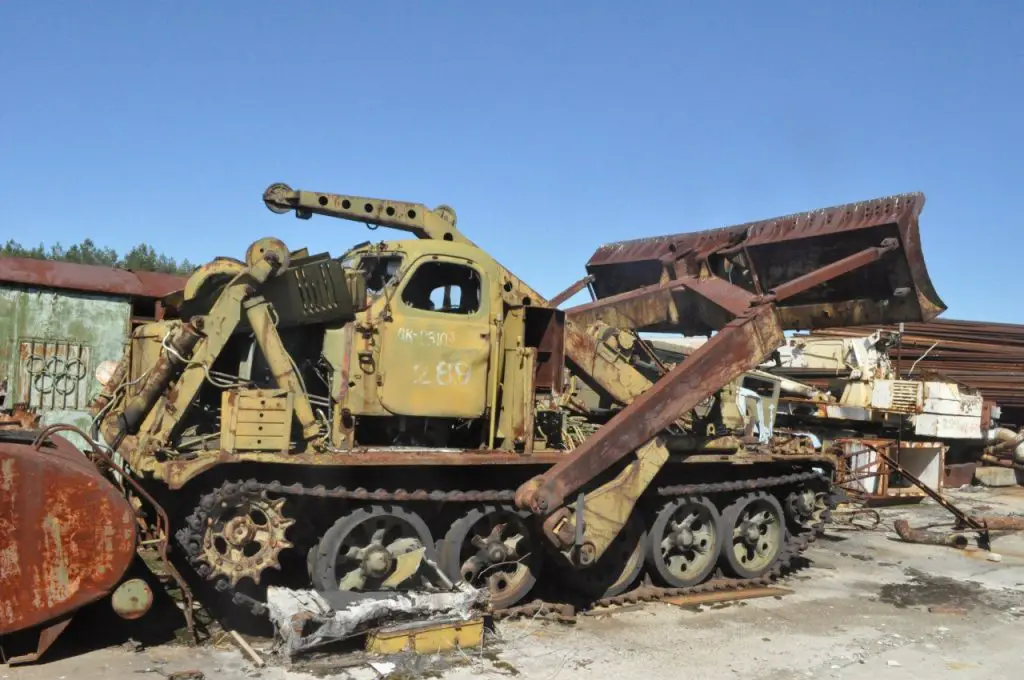
Helicopters
During the evacuation cars, trucks, engineering vehicles, and helicopters were just a few of the ways people were taken out of the area leaving equipment behind. It seems the iron in these items absorbed the radiation making them unusable forever.
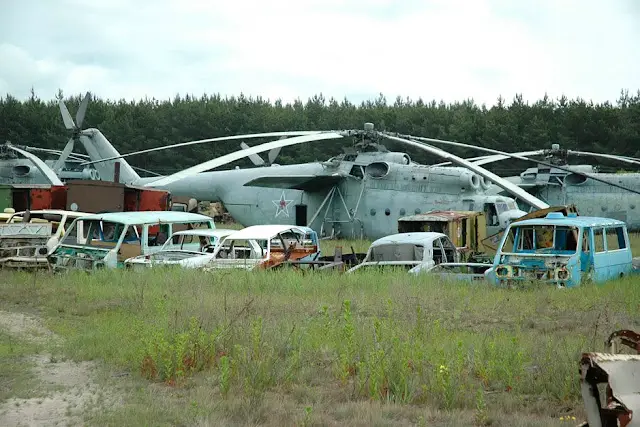
After they were taken from the plant, they were distributed around the exclusion zone making an eerie sight of vehicle graveyards, according to chernobylstory.com.
The village of Buryakivka, about two and a half miles away, was evacuated and a number of the radioactive vehicles are now stored there.
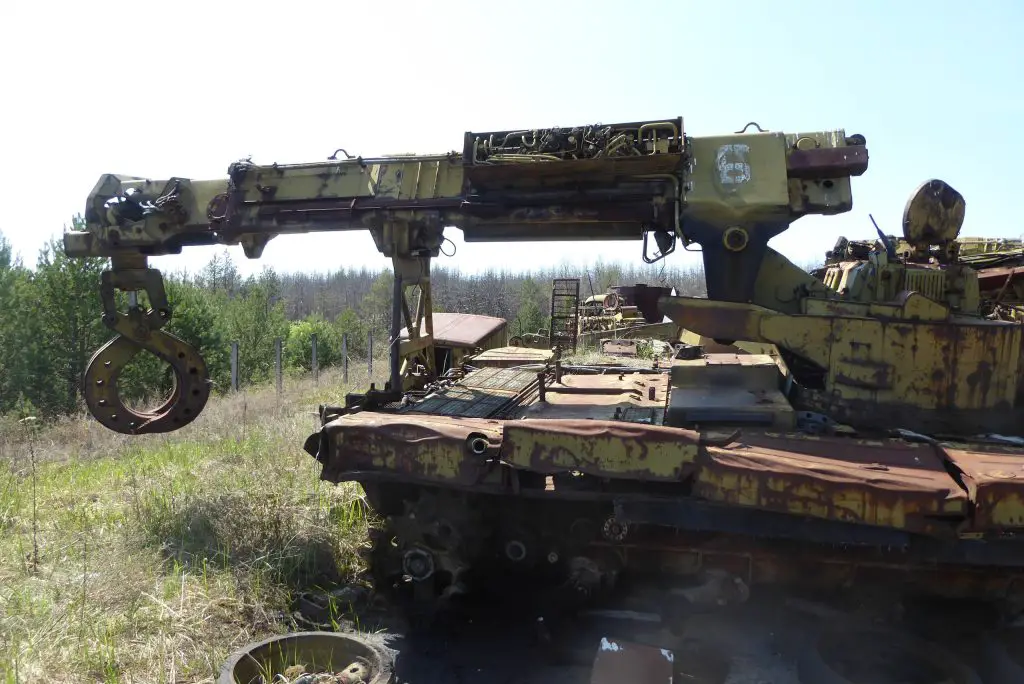
Graveyard
Scientists from the Leningrad Institute set up the graveyard in 1987 in order to study how ground surface storage for nuclear waste can be achieved.
Buryakivka is located far enough from water and any settlements it would most likely affect.
The storage area is nearly three quarters of a mile by just less than a half mile, an enormous site for unusable equipment. There are thirty ditches holding buried vehicles and discarded equipment.

Another graveyard for radioactive equipment and vehicles is in Prypiat, just under two miles away from the reactor.
This one has heavy duty vehicles such as armored trucks and tanks. A few of the trucks were used to clean the streets and buildings with a decontamination solution while soldiers and firemen came in to complete the job.
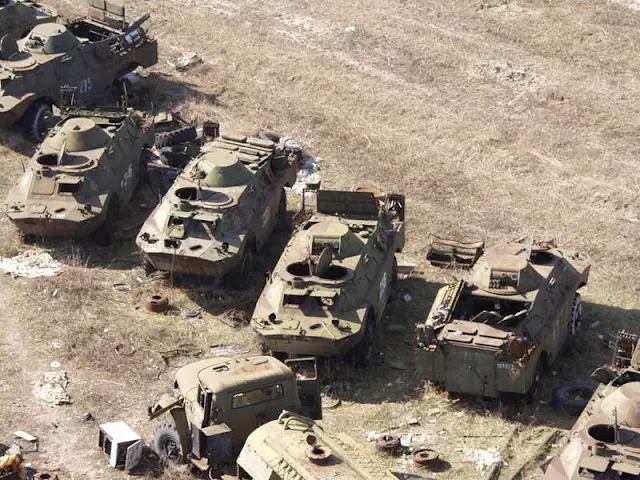
Village
Another site, which was originally intended to be temporary, is near the village of Rozsokha. It was originally thought the radiation would lessen on the cars, the ten Mi-8 and Mi-6 helicopters, which were used to pour sand on the reactor to minimize the spread of radioactivity, the motorcycles, and buses worth about forty eight million dollars.

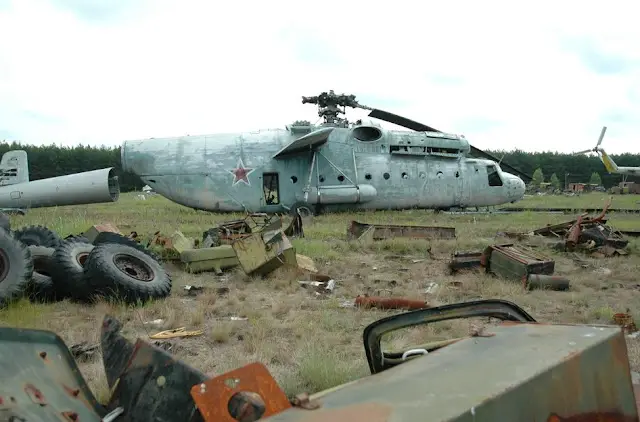
The vehicles and equipment were washed with special chemicals and dismantled but some had to go through the process repeatedly until they reached an acceptable level. Even so, the vehicles will be radioactive for thousands of years.
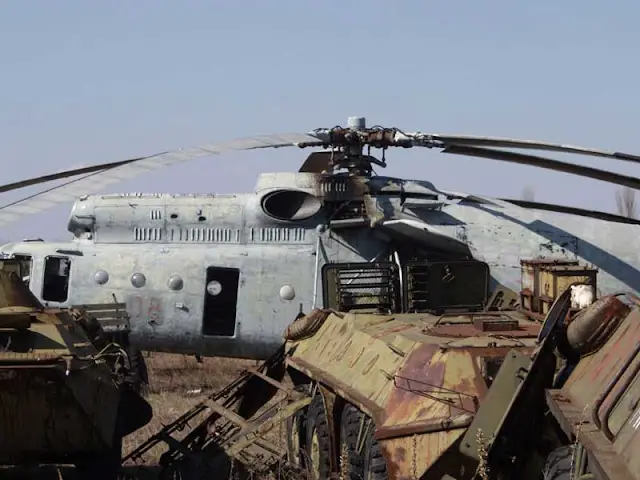
Armor
Along with the vehicles on the over forty nine acre site there are a large number of jeeps, armored personnel carriers and chemical reconnaissance vehicles.

This particular graveyard has been frequented by looters who take the radioactive materials and vehicles to sell for a huge profit and don’t take the radioactivity seriously. One wonders if the thieves were to sell what they found – would they reveal that fact to the buyers?
There are other small villages in the area which have vehicle graveyards with industrial trucks and tanks but not on such a large scale. Zimovishchi, Kopachi is the site of one.
World-nuclear.org tells us that the Chernobyl accident in 1986 was caused by a defective reactor run by people were not properly trained.
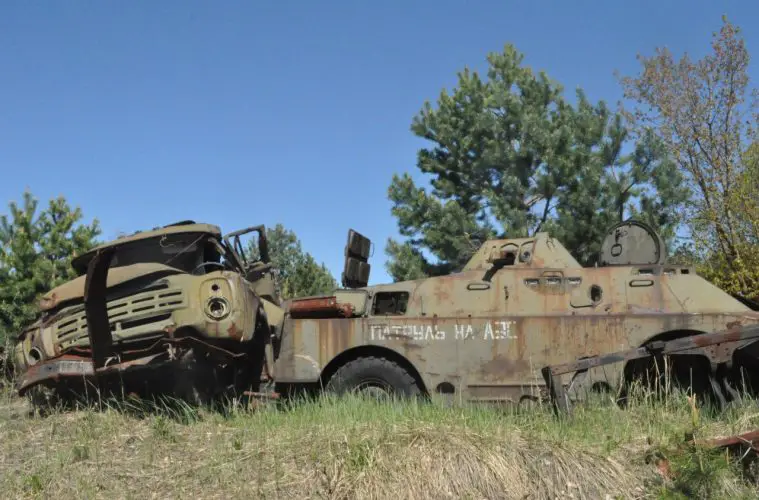
Remembrance Day
The explosion was in reactor number four which experienced a major surge of power. The reactor building was destroyed and radiation was spread over ninety three square miles of Russia, Ukraine and Belarus. And even effected areas of Scotland and
Another Article From Us: Two Soviet Era Radioactive Wrecks to be Recovered
If you like this article, then please follow us on Facebook, Instagram
All of the reactors at Chernobyl are now shut down and the public is free to visit the area but only under strict tours.
April 26th has been designated as International Chernobyl Disaster Remembrance Day by the United Nations as a way to educate about exactly what happened to hopefully prevent it from happening again.
